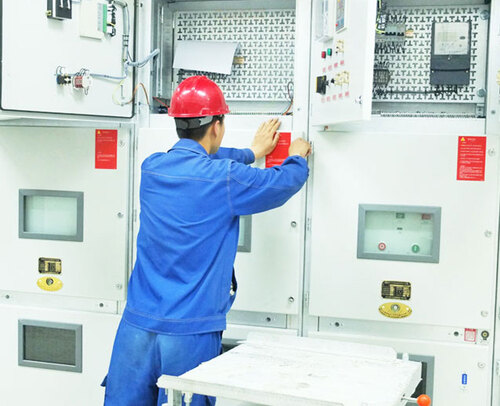
- English
- Español
- Português
- русский
- Français
- 日本語
- Deutsch
- tiếng Việt
- Italiano
- Nederlands
- ภาษาไทย
- Polski
- 한국어
- Svenska
- magyar
- Malay
- বাংলা ভাষার
- Dansk
- Suomi
- हिन्दी
- Pilipino
- Türkçe
- Gaeilge
- العربية
- Indonesia
- Norsk
- تمل
- český
- ελληνικά
- український
- Javanese
- فارسی
- தமிழ்
- తెలుగు
- नेपाली
- Burmese
- български
- ລາວ
- Latine
- Қазақша
- Euskal
- Azərbaycan
- Slovenský jazyk
- Македонски
- Lietuvos
- Eesti Keel
- Română
- Slovenski
- मराठी
- Srpski језик
Switchgear Maintenance: Best Practices for Longevity and Performance
2024-06-01
Switchgear Maintenance: Best Practices for Longevity and Performance
Switchgear is vital for ensuring the safe and efficient operation of electrical power systems. Proper maintenance is crucial to extend its lifespan and ensure optimal performance. Here are the best practices for maintaining switchgear:
Regular Inspections
Conduct routine visual inspections to identify any signs of wear, corrosion, or damage. Look for loose connections, dirt, moisture, or any physical deformities. Inspections should be scheduled periodically based on the manufacturer's recommendations and the operational environment.

Cleaning and Lubrication
Keep switchgear components clean and free from dust and debris. Use appropriate cleaning agents and tools to avoid damaging sensitive parts. Lubricate moving parts like circuit breakers and disconnect switches to ensure smooth operation and prevent wear.
Testing and Calibration
Regular testing and calibration of switchgear components, such as relays and circuit breakers, are essential. Perform dielectric testing, insulation resistance testing, and functional testing to ensure components are operating correctly and within specified parameters.
Monitoring and Diagnostics
Implement continuous monitoring systems to track the condition and performance of switchgear. Use thermal imaging cameras to detect hotspots, and install sensors to monitor temperature, humidity, and other critical parameters. Diagnostics can help predict potential failures and plan maintenance activities proactively.

Upgrading and Retrofitting
Consider upgrading or retrofitting older switchgear with modern components to improve performance and safety. This can include replacing outdated protection relays with digital versions or upgrading insulation materials. Modern upgrades can enhance reliability and reduce maintenance requirements.
Documentation and Training
Maintain detailed records of all maintenance activities, including inspections, tests, repairs, and replacements. Proper documentation helps track the switchgear's condition and identify recurring issues. Additionally, ensure that maintenance personnel are well-trained and updated on the latest maintenance practices and safety standards.
Environmental Control
Control the environmental conditions where switchgear is installed. Ensure adequate ventilation, temperature control, and protection from moisture. Keeping the environment stable helps prevent premature aging and failure of switchgear components.
Arc Flash Protection
Implement arc flash protection measures to safeguard personnel and equipment. Use arc-resistant switchgear, ensure proper PPE (Personal Protective Equipment) is used, and follow safe working procedures. Regularly review and update arc flash studies to maintain a safe working environment.
Scheduled Maintenance
Adhere to a structured maintenance schedule based on the manufacturer's guidelines and industry best practices. Scheduled maintenance activities can include cleaning, lubrication, testing, calibration, and component replacement. Proactive maintenance helps prevent unexpected failures and extends the switchgear's lifespan.
Emergency Preparedness
Develop and implement an emergency response plan for switchgear failures. This plan should include procedures for isolating faulty sections, restoring power, and repairing or replacing damaged components. Regularly train personnel on emergency response protocols to ensure quick and effective action during emergencies.
By following these best practices, you can ensure that your switchgear remains reliable, safe, and efficient throughout its operational life. Proper maintenance not only extends the longevity of the equipment but also enhances overall system performance, reducing downtime and minimizing the risk of costly failures.
For more detailed guidelines and specific maintenance procedures, refer to the manufacturer's manual and consult with industry experts. Regularly updating your maintenance strategies based on the latest technologies and standards will help keep your switchgear in optimal condition.




